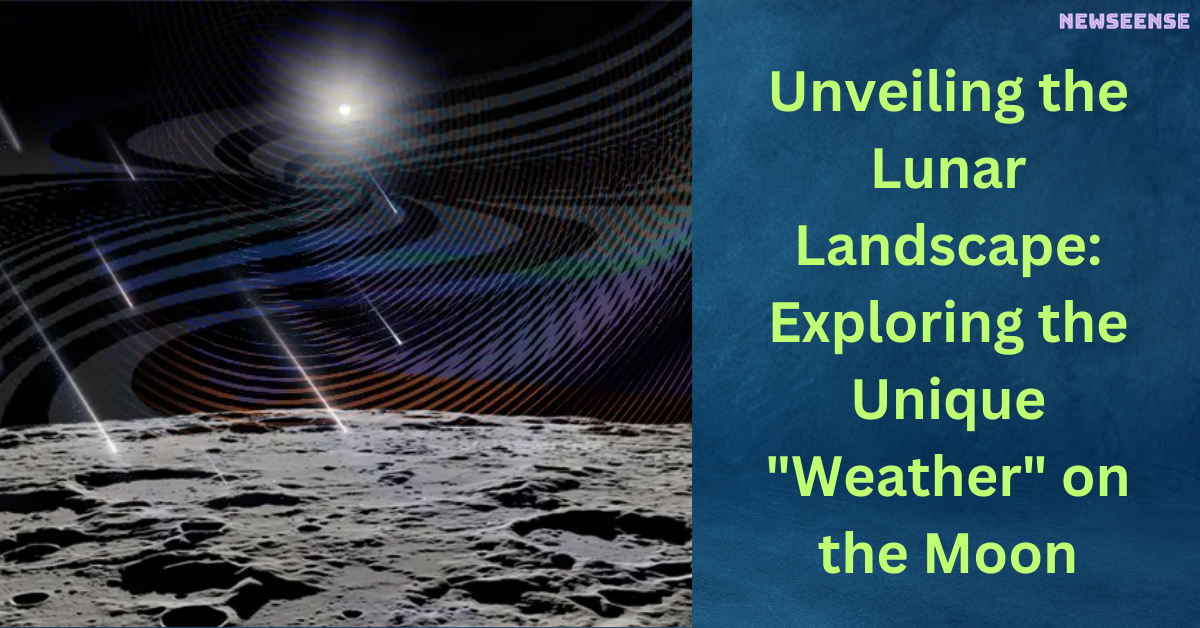Unveiling the Lunar Landscape: Exploring the Unique “Weather” on the Moon

In the desolate expanse of space, the Moon stands as a celestial body with weather phenomena starkly distinct from Earth’s atmospheric conditions. Forget about snowfall, thunderstorms, or cloud formations; the Moon’s weather narrative is written by extreme temperature swings, relentless space rocks, and a sparse exosphere that unveils a cosmic dance of energy and particles.
Table of Contents

The Silent Lunar Climate
- On the Moon, traditional weather elements like snow, thunder, and clouds are conspicuously absent.
- Lunar weather is shaped by temperature variations, space rocks, and solar influences rather than Earth-like atmospheric dynamics.
The Lunar Exosphere
- Without a protective atmosphere akin to Earth’s, the Moon experiences rapid and drastic temperature changes.
- The lunar exosphere, a thin layer of gas surrounding the Moon, is unable to trap or disperse the Sun’s energy, leading to extreme temperature differentials.
Temperature Extremes
- Temperatures near the Moon’s equator can soar to a scorching 250°F (121°C) during daylight and plunge to a bone-chilling -208°F (-133°C) at night.
- Deep craters near the lunar poles experience even colder conditions, with NASA’s Lunar Reconnaissance Orbiter recording temperatures lower than -410°F (-246°C) in permanent shadows.
Space-Driven Lunar “Weather”
- Unlike Earth’s weather influenced by atmospheric processes, lunar weather originates directly from space.
- Galactic Cosmic Rays (GCRs) from distant corners of the Milky Way can break apart lunar surface atoms, releasing radiation.
Solar Wind Influence
- The Moon encounters a continuous stream of solar “wind” that not only gives it a celestial sunburn but also charges the lunar landscape with static electricity.
- Chemical ingredients carried by the solar wind contribute to potential water formation on the Moon.
Coronal Mass Ejections (CMEs)
- Shock waves from colossal eruptions on the Sun, known as Coronal Mass Ejections (CMEs), intermittently deliver bursts of high-energy particles to the Moon.
Micrometeoroid Ballet
- The lunar surface experiences a constant bombardment of micrometeoroids and occasional larger space objects.
- This dry shower of space debris, known as impact gardening, shuffles materials in the Moon’s exterior layers, unveiling fresh substances.
The Moon’s “weather” is a captivating interplay of cosmic forces, where temperature extremes, cosmic rays, solar winds, CMEs, and micrometeoroids orchestrate a unique symphony. As we delve into the lunar landscape, the absence of traditional weather elements highlights the lunar environment’s otherworldly nature. Understanding these lunar weather dynamics not only deepens our knowledge of our celestial neighbor but also opens new avenues for future space exploration endeavors.
Information source: NASA
Also read: https://newseense.com/exploring-earth-our-extraordinary-cosmic-abode/
- BJP President JP Nadda Issues Notice to Dilip Ghosh Over Controversial Remarks on Mamata Banerjee
- Ram Charan and Kiara Advani’s ‘Jaragandi’ Song from Game Changer Released
- Pre-Match Banter: Rohit Sharma’s Flying Kiss Recreation Adds Spice to MI vs SRH Clash
- Swami Smaranananda Maharaj, President of Ramakrishna Math and Ramakrishna Mission, Passes Away at 95
- Stand-up Comedian Munawar Faruqui Breaks Silence on Social Media After Mumbai Police Detention






2 Comments